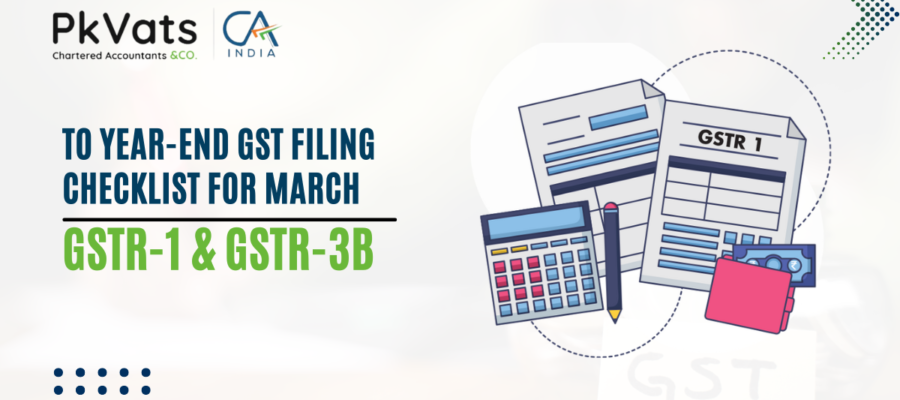Contents Covered
- March GST return checklist
GSTR 3B March filing tips
GSTR 1 reconciliation
Year-end GST adjustments
GST annual return preparation
ITC matching GSTR 2B
GST compliance for March 2025
Conclusion
March is not just another GST filing month—it’s the financial year-end, making it crucial for businesses and professionals to perform a detailed review of their GST filings. Ensuring accuracy in GSTR-1 and GSTR-3B is essential to avoid future complications and ensure smooth year-end compliance.
Below is a comprehensive GST checklist to follow before filing GSTR-1 and GSTR-3B for the month of March 2025:
TDS Data for Q4 is Not Fully Updated (26AS from taxpayer perspective)
Ensure that the sales or revenue reported in the books of accounts match exactly with those declared in GSTR-1 and GSTR-3B. Any mismatches could lead to notices or audit complications in the future.
Match Sales with Actual Bank Realisations (Especially for B2C)
For Business-to-Consumer (B2C) transactions, verify that sales recorded are in line with the payments received in the bank account. This cross-verification helps detect any unaccounted sales or errors in recording.
Cross-Verify Sales with GST TDS & TCS Returns
If your business has sales to government entities (subject to GST TDS) or via e-commerce platforms like Amazon or Flipkart (subject to TCS):
- Ensure that the sales reported in GSTR-1 match with GST TDS/TCS returns.
- Any discrepancies should be corrected before filing the return.
Match Input Tax Credit (ITC) in Books with GSTR-2B
Compare the ITC booked in your books of accounts with the auto-populated GSTR-2B available on the GST portal.
- If there is a mismatch, initiate follow-ups with vendors for timely rectification.
- Missing ITC claims can lead to cash flow issues.
Ensure ITC Claimed in GSTR-3B Matches GSTR-2B
The Input Tax Credit claimed in GSTR-3B must match the eligible ITC reflected in GSTR-2B. Over-claiming ITC can lead to penalties and interest, while under-claiming results in cash blockages.
Complete All Reversals in March GST Return
If there are any ITC reversals pending due to ineligible credits, non-payment within 180 days, or other reasons:
- Ensure that these reversals are done in the March return itself.
- This helps in accurate year-end compliance and avoids carry-forward issues.
Pay Reverse Charge Mechanism (RCM) GST Wherever Applicable
For services or goods falling under Reverse Charge Mechanism (RCM):
Ensure that the RCM liability is discharged in cash.
Also, record the corresponding ITC (if eligible) in the books.
Sr. No. | Checklist Item | Status (✔ / ✘) | Remarks |
1 | Sales in Books = GSTR-1 = GSTR-3B | ||
2 | Sales matched with Bank (especially B2C) | ||
3 | GST TDS/TCS returns filed & aligned with GSTR | ||
4 | ITC in Books = GSTR-2B (Vendor follow-up if needed) | ||
5 | ITC Claimed in GSTR-3B = ITC in GSTR-2B | ||
6 | Reversals (if any) done in March return | ||
7 | RCM paid wherever applicable |
Conclusion
Though the deadline for annual adjustments and corrections extends till September of the following financial year, it’s always a best practice to close the year neatly by March. This not only ensures better control and compliance but also helps in a smoother GST Annual Return filing process later and avoids GST Litigations.
Any Question, feel free to connect with us




